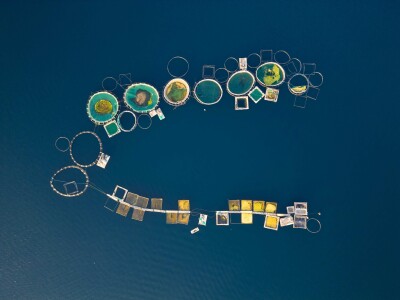October 20, 2021
iXblue's major innovations for bottom detection with SeapiX 3D volume sonar.
iXblue

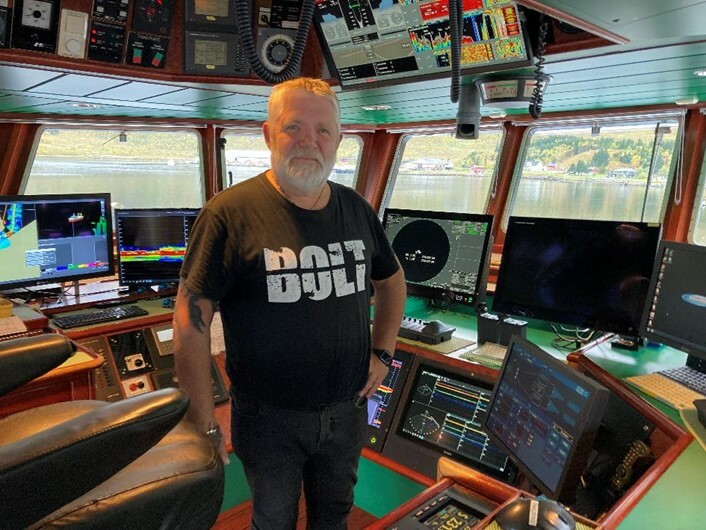
For several years, iXblue has been developing its SeapiX 3D volume sonar technology for bottom trawlers. The main goal is to provide the most realistic assessment of species abundance and distribution, in order to significantly reduce by-catch and operating costs.
Capitalizing on the experience in biomass analysis of a large fleet of bottom trawlers (Northern Europe, Alaska, South Atlantic), iXblue has developed for SeapiX new processing methods specifically for bottom trawling. After a first step in 2020 enabling to reach a very high density of measurement thanks to its 512 beams with a 0.5° spacing offering a unique spatial resolution on the market for biomass measurement, SeapiX users will benefit from a major upgrade as of October 2021.
New technology for high density biomass data presentation
SeapiX now processes 256 beams in real-time for each sonar swath, with up to 8,000 measurements per beam. For iXblue engineers, this meant inventing new data processing and display capabilities. Thus, several new functionalities are now available.
The high temporal density of biomass measurements is processed by the "Time Zoom" function, which offers up to 5 times more detection information in the echograms.
In order to benefit from the full resolution and to analyze each individual detection in the demersal layer, SeapiX offers the "Echogram Range" visualization.
Innovative background data processing
In order to take full advantage of SeapiX's unique ability to extract fish close to the bottom due to its narrow beams, a new Bottom Lock echogram processing offers a visualization of individual detections included in a 1m to 15m scale. This "Bottom Lock" window also benefits from a specific gain setting allowing an optimization of its display, and its layout in an independent window constituting a full screen 4K bottom echogram.
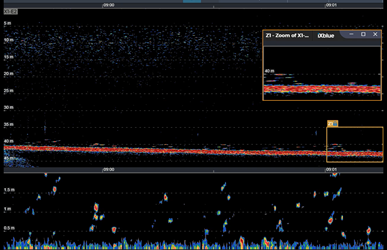
In addition to the Bottom Lock, new "Locked Zoom" windows allow the user to understand the bottom's and biomass's geometry. Each Zoom window is locked to the bottom profile providing automatic bottom tracking.
Automatic bottom tracking
As SeapiX consists of a large number of beams in the transverse and longitudinal axes, iXblue's R&D department had to develop new advanced algorithms to allow fully automatic use of SeapiX for bottom trawling.
First of all, the new "Auto Range" function allows SeapiX to adapt to any change in depth and to guarantee optimal performance at all times.
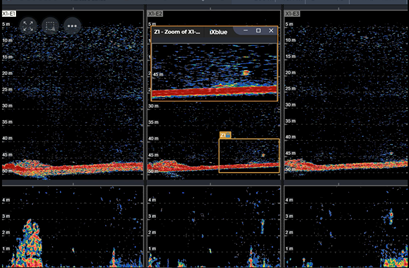
In addition, the display of echograms is provided in "Auto Zoom" mode, offering at all times the best biomass image accuracy in full screen.
Modes of operation tailored to each work phase
SeapiX offers virtually unlimited combinations of sonar swaths and echograms for trained operators. Pre-programmed "Modes of Operation" allow immediate and simple use for all operators, choosing the desired combination and presentation according to the trawl job being done.
The reference tool for forward detection
All of these new features have been optimized at sea with reference vessels, and have demonstrated exceptional performance in the discrimination of demersal and bottom fish. The skipper can train either echograms from the bow or high precision sonar swaths.

These new features have been developed to give a new realistic and clear vision of the biomass located in the fore part of the vessel above the bottom. The results achieved at sea demonstrate this, and make SeapiX the most relevant and realistic tool for the analysis of fish and its environment for near-bottom trawling. Coupled with the global vision of the ecosystem and the ship, the skipper can finally optimize his maneuvers and reduce his costs.
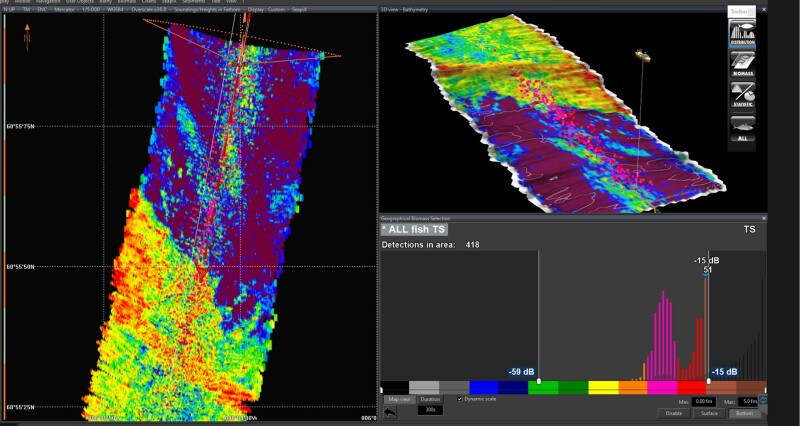
More info on : https://www.ixblue.com/products/seapix-f






